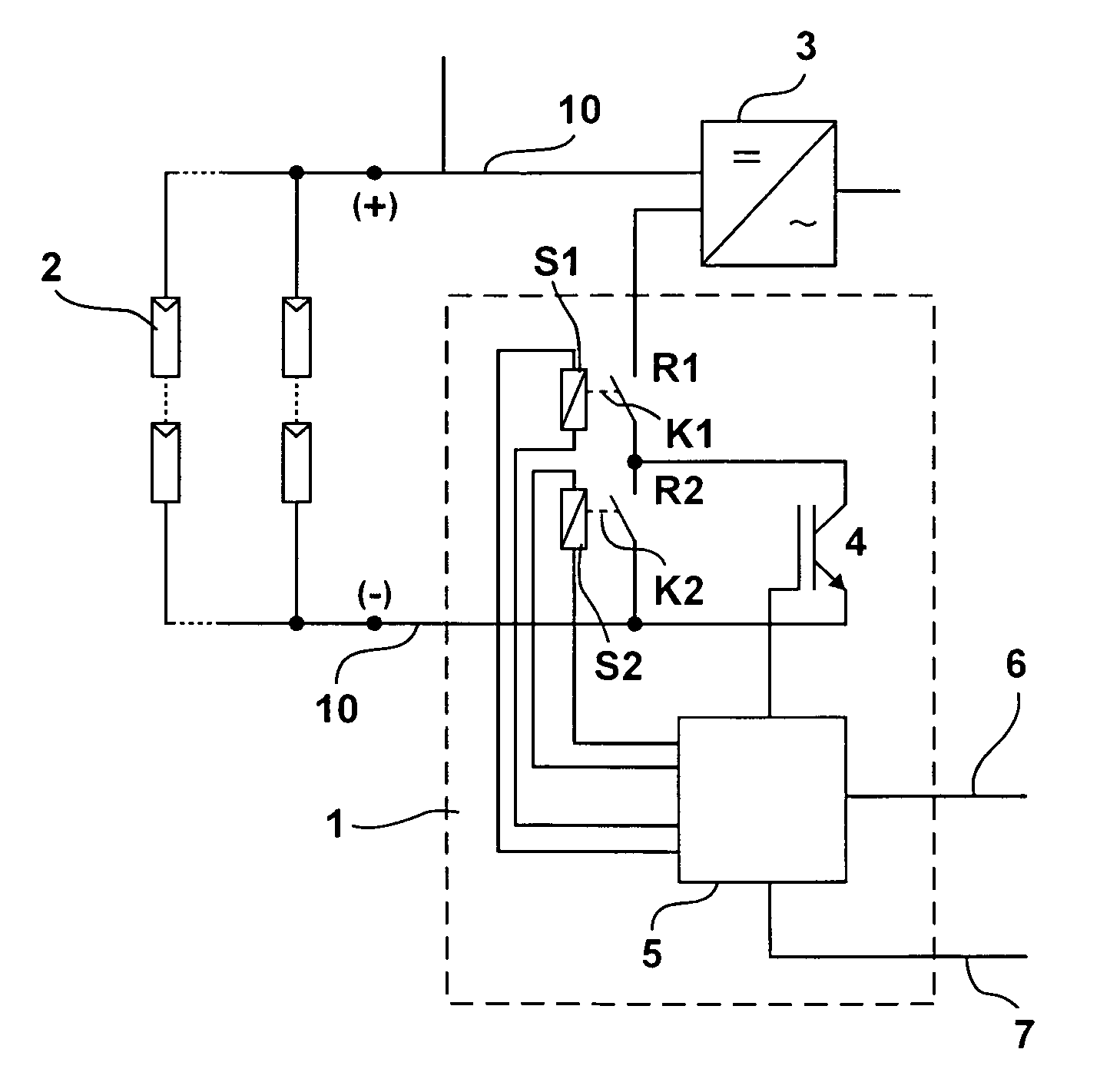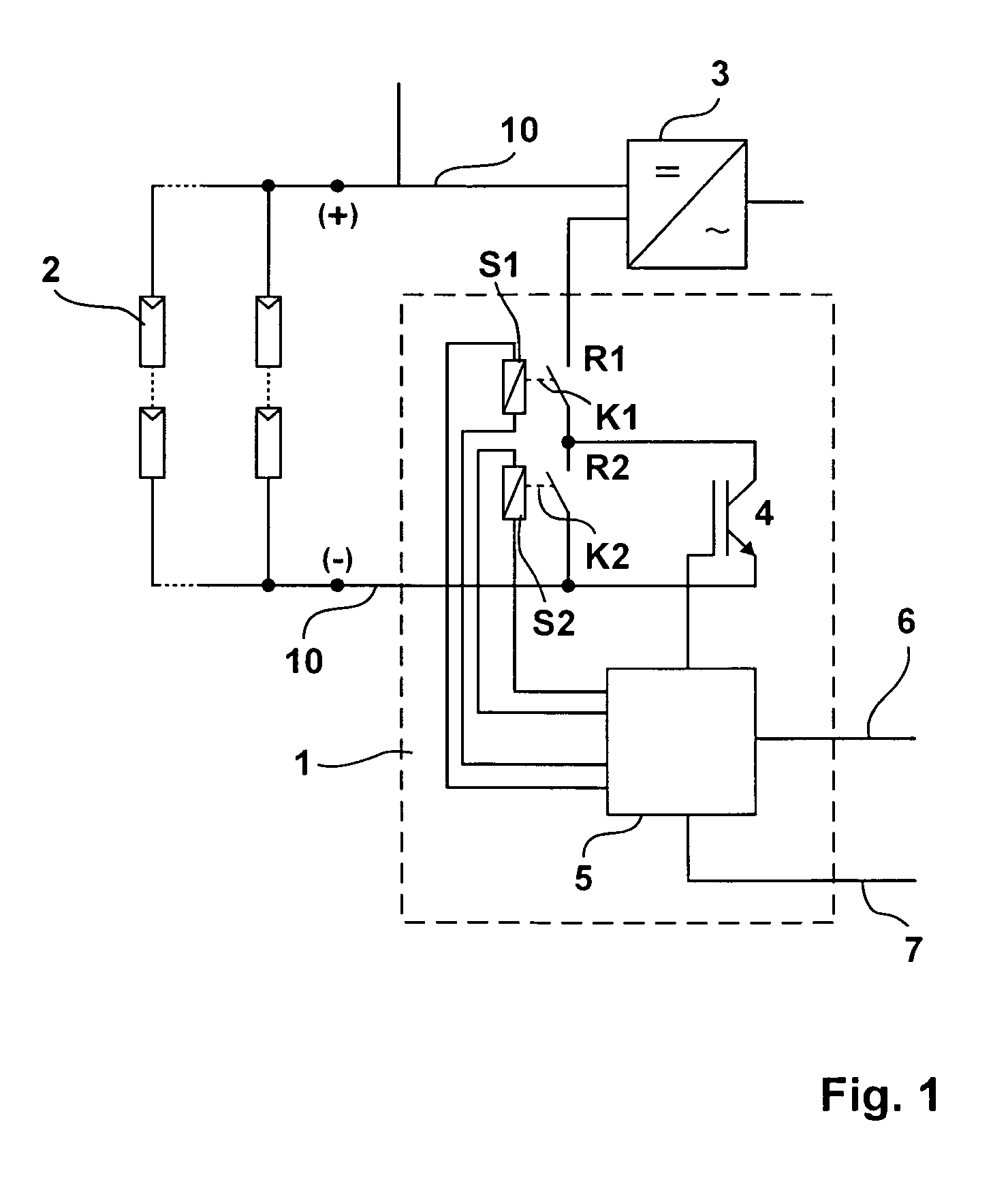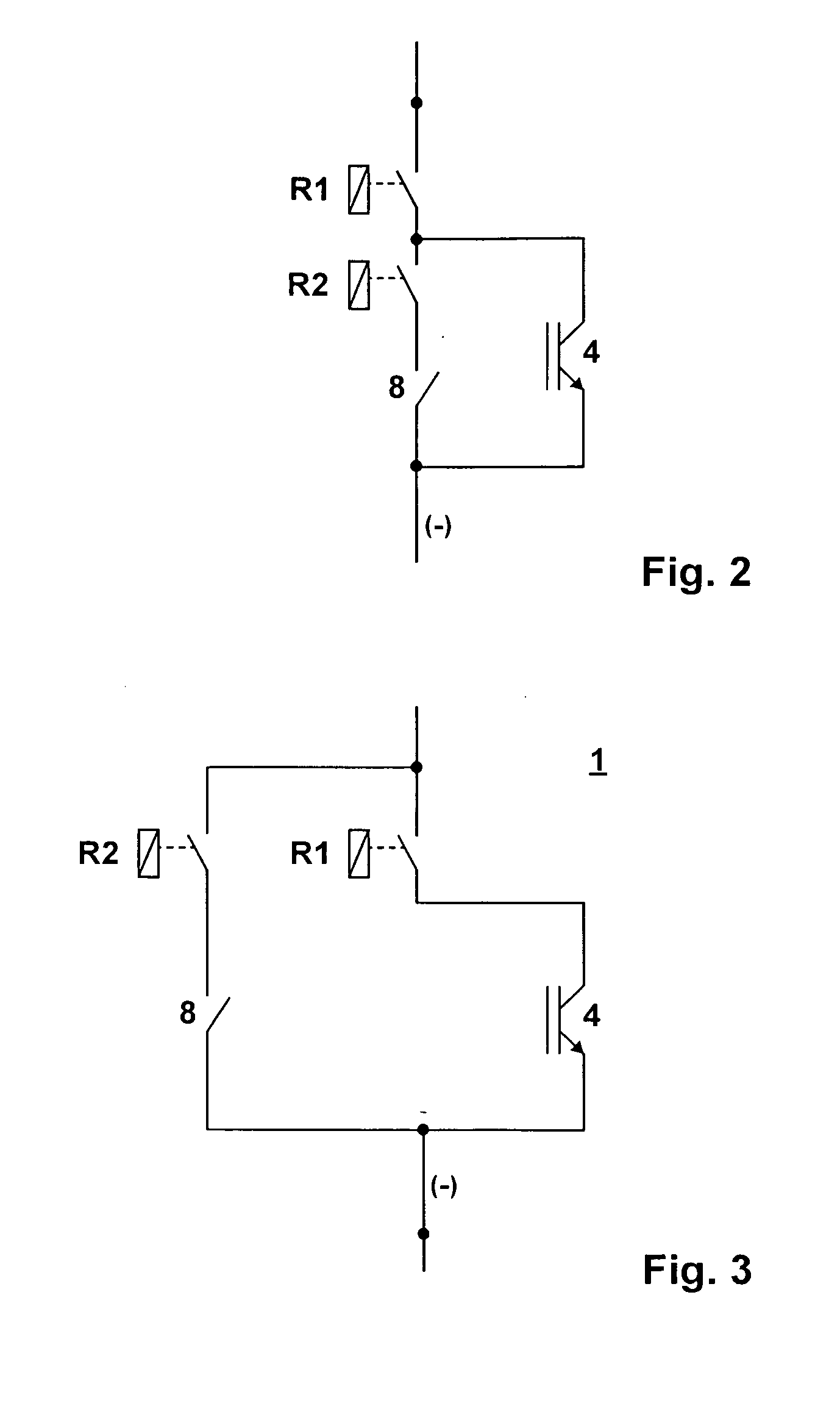Load breaker arrangement
a load breaker and arrangement technology, applied in the direction of circuit-breaking switches, circuit-breaking switches for excess current, protective switch details, etc., can solve the problems of high temperature, high contact burn of switching contacts, and electrical arcs, and achieve the effect of low cos
- Summary
- Abstract
- Description
- Claims
- Application Information
AI Technical Summary
Benefits of technology
Problems solved by technology
Method used
Image
Examples
Embodiment Construction
[0040]FIG. 1 illustrates a first example of a load breaker arrangement 1. This arrangement incorporates two relays R1 and R2. Each relay comprises a control coil S1, S2 with a switching contact K1, K2 or a pair of contacts. Both relays or more precisely both switching contacts K1, K2 are connected in series. For simplicity' sake, they will be referred to as relays.
[0041]A semiconductor switching element 4, in particular an IGBT switch, is connected in parallel to the relay.
[0042]The arrangement 1 lies in a DC current circuit with DC lines 10 between a photovoltaic generator 2, a photovoltaic plant and an inverter 3 or a DC / AC converter. If the photovoltaic generator 2 is added to the circuit of the inverter 3, the two relays R1, R2 are closed. Both relays are designed for being capable of carrying the needed load current in the closed condition.
[0043]Further, the arrangement 1 incorporates an electronic control unit 5 that is connected to the relays R1, R2 or to its control coils S1...
PUM
 Login to View More
Login to View More Abstract
Description
Claims
Application Information
 Login to View More
Login to View More - R&D
- Intellectual Property
- Life Sciences
- Materials
- Tech Scout
- Unparalleled Data Quality
- Higher Quality Content
- 60% Fewer Hallucinations
Browse by: Latest US Patents, China's latest patents, Technical Efficacy Thesaurus, Application Domain, Technology Topic, Popular Technical Reports.
© 2025 PatSnap. All rights reserved.Legal|Privacy policy|Modern Slavery Act Transparency Statement|Sitemap|About US| Contact US: help@patsnap.com



